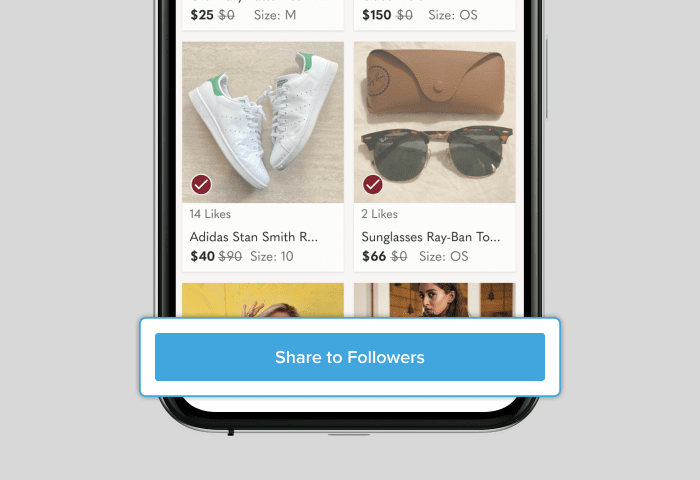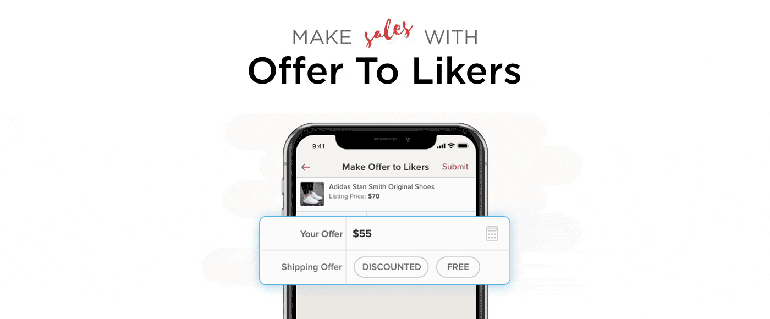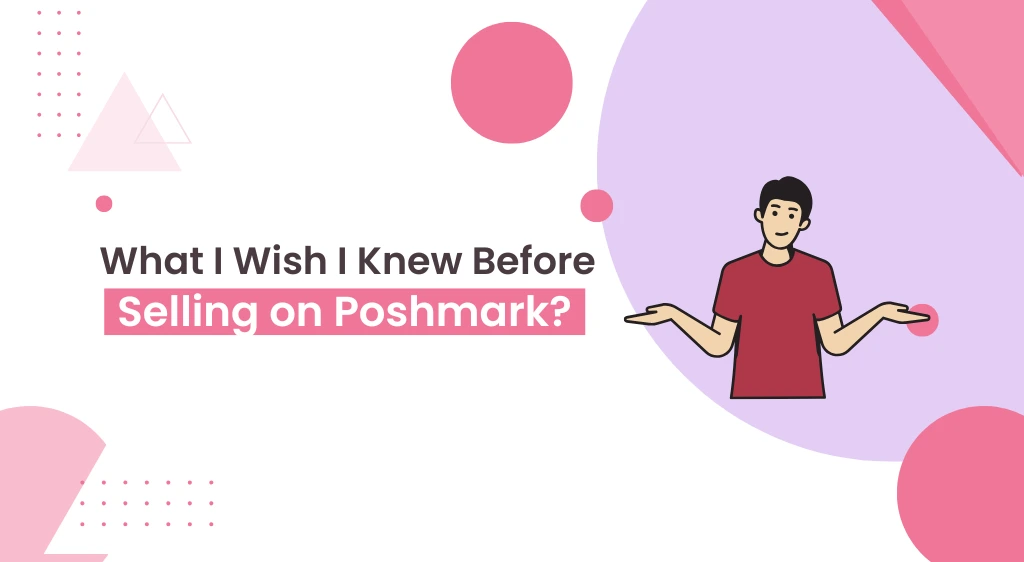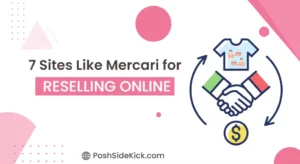Selling on Poshmark is an exciting way to declutter your closet and make some extra cash, but there’s a lot to learn before diving in.
When I first started selling on Poshmark, I wish I had known how much time and effort it takes to create listings, take good photos, and engage with buyers.
It’s not as simple as just posting an item and waiting for it to sell. Understanding Poshmark algorithm and features like sharing listings and sending offers to likers, can make a big difference in your success.
Pricing your items competitively and knowing how to negotiate on Poshmark are also key skills. Plus, being prepared for the occasional lowball offer or slow sales is important.
If I had known these things earlier, I could have saved myself a lot of frustration and set more realistic expectations from the start.
Here is what I wish I knew before selling on Poshmark.
What I Wish I Knew Before Selling on Poshmark?
1- Sharing is the Recipe to Success on Poshmark

Consistent sharing is the foundation of Poshmark success. Unlike other online marketplaces where you list once and wait, Poshmark requires active engagement.
Share your listings at least twice daily. Morning shares catch early browsers, while evening shares reach night shoppers. Each time you share, your items move to the top of Poshmark search results, increasing visibility dramatically.
Don’t stop at your own closet! Share other sellers’ items too. This builds community and often leads to reciprocal shares. Many successful Poshmark sellers set aside 15-30 minutes twice daily just for sharing.
Remember that the Poshmark algorithm favors active users. The more you share, the more the platform promotes your items to buyers.
If you don’t have enough time for sharing or are struggling to be consistent enough with it then try PoshSidekick to automate your sharing on Poshmark.
2- Product Photos Matter More Than You Think

On Poshmark, your product photos are your storefront. Poor quality photos can sink even the most desirable items.
Natural lighting works wonders. Take photos near windows during daylight hours to capture true colors without harsh shadows. Avoid using flash, which often distorts colors and creates unflattering glares.
Include multiple angles of each item. Front, back, sides, close-ups of important details, and any flaws should all be clearly visible. Transparency builds trust with buyers.
Consider investing in a plain white or neutral background. This helps items stand out and gives your closet a cohesive, professional look. Even a simple white sheet can transform your photos.
Show the item being worn when possible. “Flat lay” photos are good, but modeling or using a mannequin helps buyers visualize how items fit or look.
3- Keywords & SEO Are Important

Think like a buyer when creating listings on Poshmark. What search terms would someone use to find your item?
Include brand names, sizes, colors, styles, and materials in your titles. For example, instead of “Red Dress,” use “J.Crew Red Fit and Flare Cotton Sundress Size 8.”
The first 3-5 words in your title matter most for search results. Put the most important keywords first, usually the brand name followed by the item type.
Descriptions should repeat key information from the title and add details about condition, measurements, and style suggestions. This will significantly improve searchability and answer common buyer questions upfront.
Study product listings of successful Posh sellers in your niche. Note which keywords they use and how they structure their descriptions. This research will help you in improving your own SEO strategy.
4- Send Offer to Likers

A “like” on Poshmark signals interest but hesitation. It means someone is interested in buying your item but needs a gentle nudge.
Wait until you have at least 2-3 likers on an item before sending offers. This maximizes the potential return on the shipping discount you’ll provide.
Offers should be at least 10% below your listing price to tempt buyers. I’ve found that 15-20% discounts convert at the highest rate, balancing profit with sale probability.
Also, include a shipping discount when possible. Even a small shipping reduction can be the deciding factor for many buyers who are on the fence.
Time your offers strategically. Weekends and evenings typically see more Poshmark traffic. Sending offers during these high-activity periods increases your chances of catching buyers while they’re actively browsing.
Don’t be discouraged by non-responses. Many successful sales come from second or third offers to the same likers as they continue considering the purchase.
5- Learn the Art of Negotiation on Poshmark

Negotiation is part of Poshmark culture. Embrace it rather than resist it.
Price your items with negotiation in mind. Adding a 10-15% buffer to your desired selling price gives you room to accept offers while still meeting your profit goals.
Also, don’t take too long to respond to the offers. Quick responses show professionalism and prevent buyers from moving on to other sellers.
Counter low offers instead of declining them. A buyer who makes any offer, even a low one, shows genuine interest. Countering keeps the conversation going and often leads to a middle-ground sale.
Be flexible on bundled items. Offering deeper discounts on multiple purchases encourages larger sales and offsets the single shipping cost.
Remember that a quick sale at a slightly lower price is often better than waiting weeks for a full-price buyer. Consider your inventory carrying costs and the time value of moving items quickly.
Final Words
Success on Poshmark doesn’t happen overnight. The sellers who thrive are those who consistently apply these principles day after day.
Start implementing these strategies today, and you’ll see a gradual improvement in your sales and engagement. Track your results, adjust your approach based on what works for you specifically, and stay patient through the process.
With time, what once felt like overwhelming work will become second nature. Your Poshmark closet will transform from a casual hobby into a profitable side hustle or even a full-time business.









